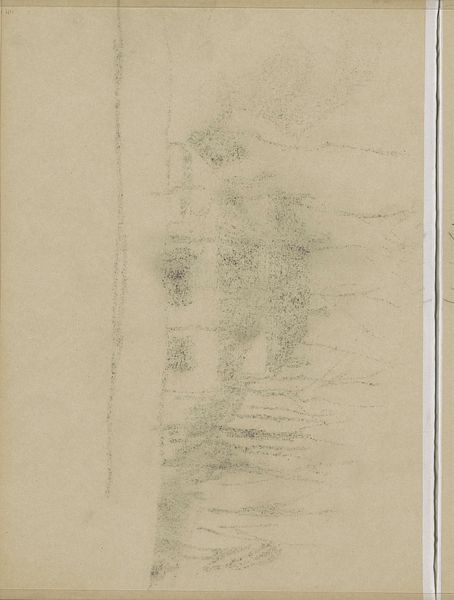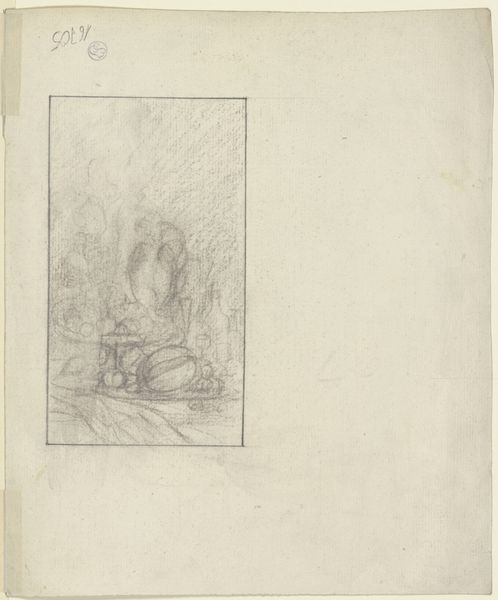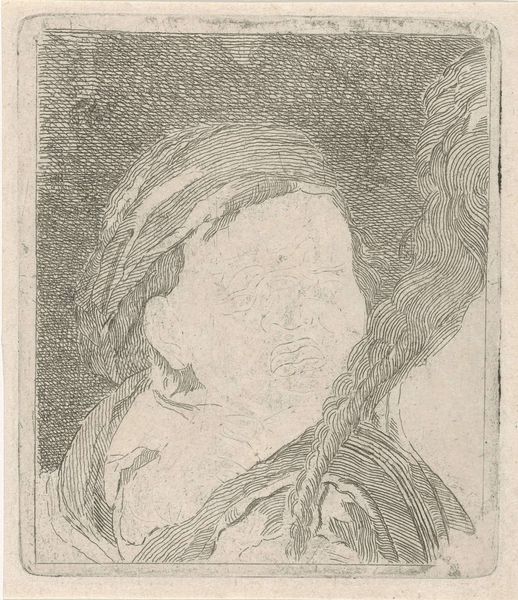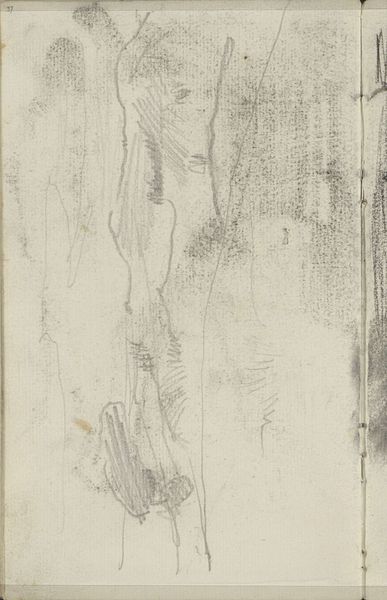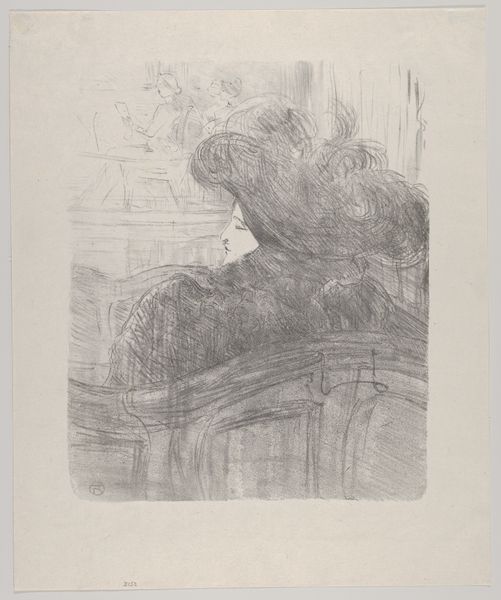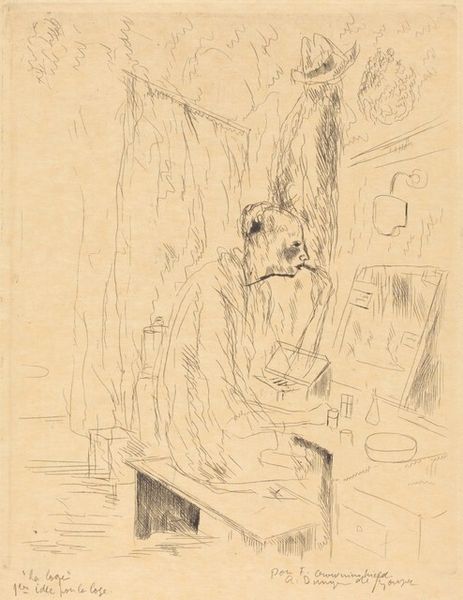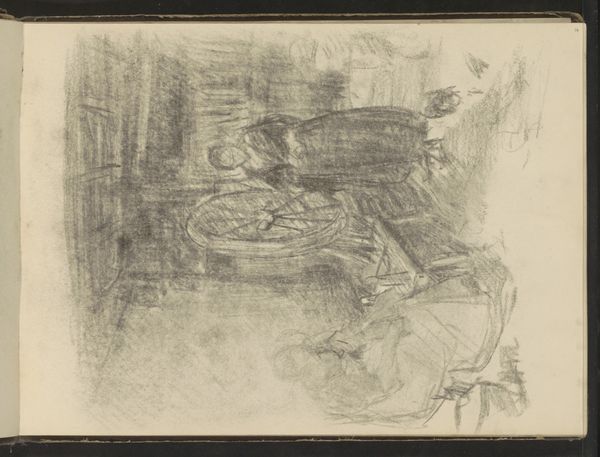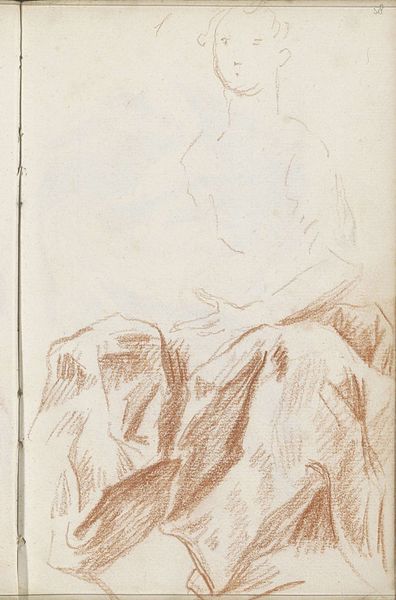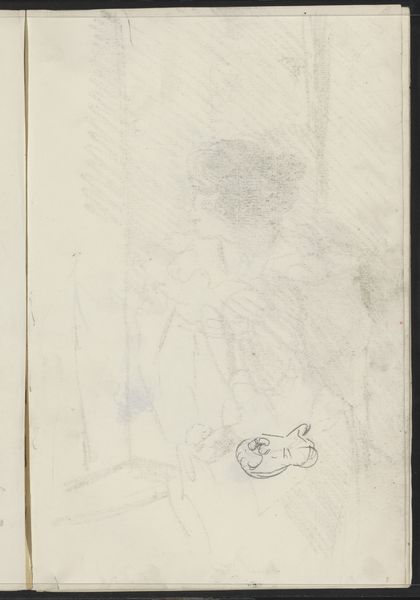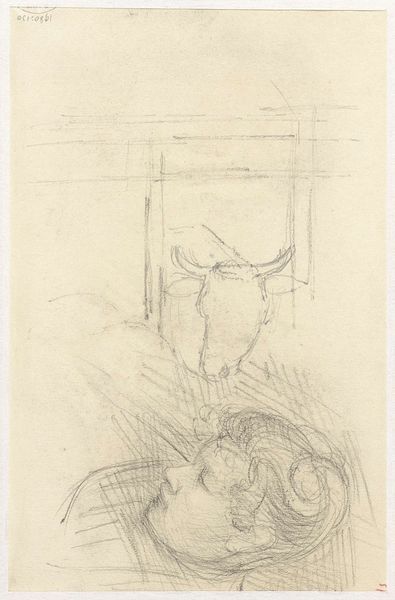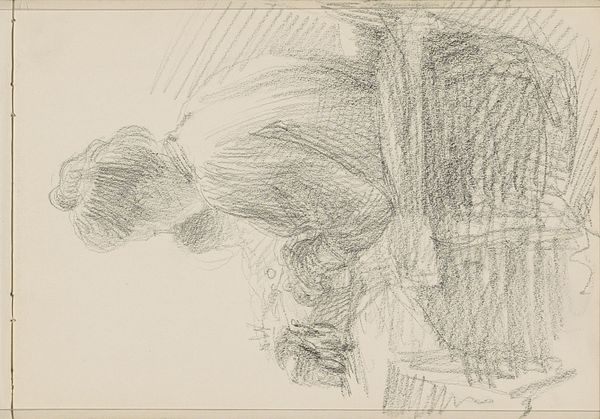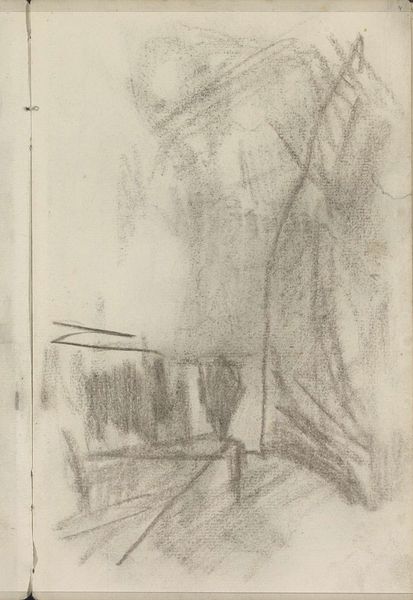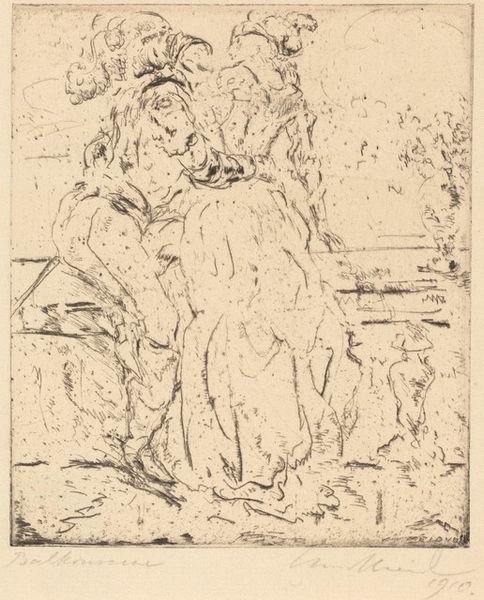
drawing, etching, frottage
#
portrait
#
pencil drawn
#
drawing
#
etching
#
symbolism
#
frottage
Copyright: Public Domain: Artvee
Editor: Here we have James Ensor’s “Borstbeeld,” created around 1887. It seems to be a drawing, maybe pencil or etching, depicting a bust on a shelf. It has such a delicate feel, almost ethereal. What stands out to you in this piece? Curator: What interests me is Ensor’s exploration of process and material here. Consider the use of etching – a traditionally reproducible medium – to depict a singular sculptural object. It invites us to question the hierarchies between "high art," like sculpture, and the seemingly more 'humble' printmaking techniques, thinking about accessibility and labour in art production. Editor: That's a fascinating point. So, you're less concerned with the symbolism and more with the physical process of its making? Curator: The symbolic is embedded within the material reality! Note the details, consider 'frotage'. This material practice removes the artists hand somewhat, democratizing the image-making. The very means of production challenges notions of artistic genius and unique skill; we consider instead the impact of mass culture and consumerism, beginning its acceleration at that time. How does Ensor's choice of material speak to his cultural context, his labour and his engagement with the market? Editor: I hadn't thought of it that way, the materials chosen reflecting social and historical trends, like mass production. It adds a whole new dimension to the artwork. Curator: Exactly. By understanding the ‘how’ of art creation, we unlock deeper meanings about its social and cultural place, prompting a broader appreciation of 'art' beyond mere aesthetics. Editor: That's a perspective I'll definitely keep in mind going forward. Thanks for enlightening me!
Comments
No comments
Be the first to comment and join the conversation on the ultimate creative platform.
